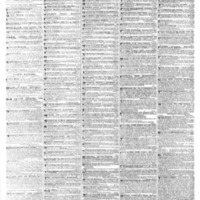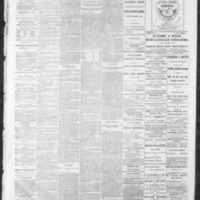Browse Exhibits (2 total)
Cushman's Networks
![CCP 11, 3302-3303, Fields, Annie to CC, Feb 5, [1868].pdf CCP 11, 3302-3303, Fields, Annie to CC, Feb 5, [1868].pdf](https://archivalgossip.com/collection/files/square_thumbnails/e8b1354308d0e7f1d1e4d7b20120078c.jpg)
This exhibit explores Cushman's private relationships as well as her (intersecting) wider social circles and networks through which she actively shaped her public image.
Choose a gallery page to learn more about
- the people among Cushman's circle of friends, lovers, acquaintances and admireres, such as
- "major figures" in Cushmania, that is Cushman's "inner circle" of family, friends, and lovers. In this gallery page, you will be introduced to Cushman's most frequent correspondents (such as Emma Crow Cushman) as well as people most frequently mentioned in her letters (e. g. Emma Stebbins or Ned Cushman)
- James T. and Annie Fields, whose correspondence with Cushman reveals her as a seasoned professional in terms of managing her reputation as well as a private person navigating the open secret of her relationship with Emma Stebbins
- the Brownings and Isa Blagden, who wrote as frequently about Cushman as they wrote to Cushman
- Cushman's reliance on and writing of letters of introduction, which were a major aspect on nineteenth-century professional and personal networks.
- her homes in Rome and Newport, in which she entertained her frequent visitors.
(force-directed graph which gives an overview
over the letter correspondence from the collection "Cushmania,"
code and simulation here)
Transatlantic Success in the 1840s

During the 1840s, Charlotte Cushman becomes a successful actress known across the Atlantic. After struggling financially, she establishes a reputation as the first gifted American actress who succeeds at performing different gender roles on stage. This exhibit provides an overview over press coverage as well as personal material concerning this crucial moment in Cushman's career.
There are numerous articles published both in the US and England for the years 1845-1852. Among these articles, various reports are reprints. The sections in which these articles can be found are called "private correspondence," "intelligence," "gossip," and theater-related columns.
Featured Exhibit
Gossip and/as Foreign Correspondence

This exhibit gathers items related to the presentation "’Interesting to the Ladies’: How Foreign Correspondents Made Gossip a Profession" for...

